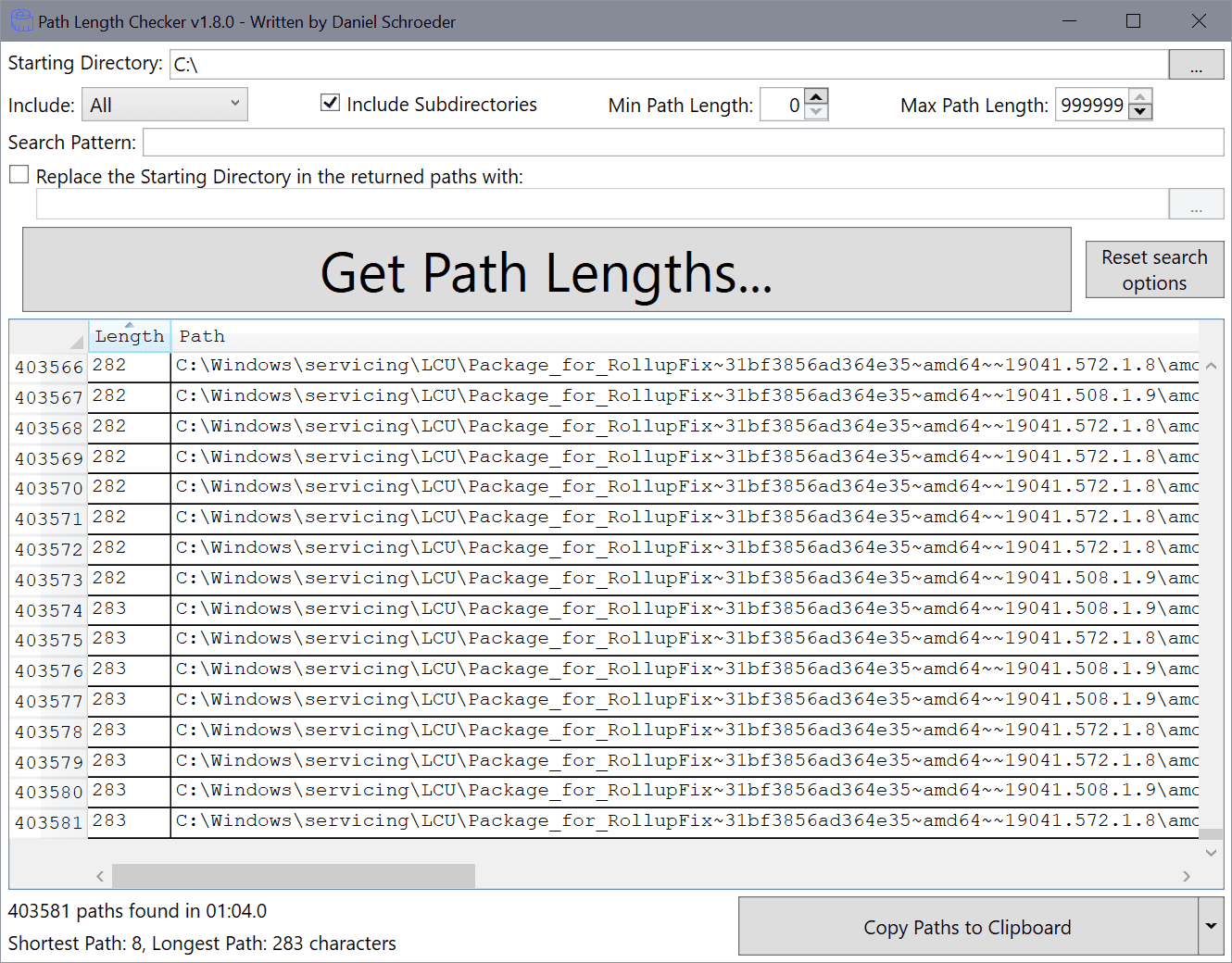There is a good chance that Windows users come into contact with the operating system’s 260 character limit for paths. A common scenario may occur when files get deleted on the system. If the path exceeds the limit, the files cannot be deleted and Windows will display an error message.
Microsoft did add an option to Windows some years ago to extend the path limit, see Microsoft ends the 260 long path limit (sort of), but support has not been added globally up until now. In other words: there is a chance that you may still run into the Path limit on Windows machines even today.
Third-party tools have been created to resolve issues linked to the path limit on Windows machines. We reviewed Long Path Fixer in the past already; this time, it is Path Length Checker which is a reporting-only tool but still useful.
Path Length Checker

Download the latest version of the program from its GitHub repository site. You need to extract the archive once it has been downloaded and may run the GUI version of it afterwards to get started.
All it takes at the base level is to select the starting directory, e.g. drive c: or a folder on any of the connected drives, and select the “get path lengths” button once the selection has been made. The dragging & dropping of a directory on the program window is also supported.
The crawling may take a while to complete but the speed was acceptable during tests (never longer than a few minutes).
Results are displayed in a table and you may click on the column headers to sort the data accordingly, e.g. by path length. The output can be copied to the clipboard; for this, you have to select one or multiple entries and the “copy paths to clipboard” option. A click on the down-arrow icon next to the button reveals options to save the selection to a CSV file.
Long Path Checker supports crawl and search filters that you may make use of. Apart from selecting the starting directory, you may also set minimum and maximum path lengths, disable the inclusion of subdirectories, and exclude files or folders from the crawl. You may also use a search pattern and have the program return the starting directory in the output with a string.
Long Path Checker includes a command line version that you may run, and a PowerShell script to run it from PowerShell.
Closing Words
Long Path Checker is a handy tool to check Windows directories for potential path violations. It is handy for developers, system administrators, but also home users. Downside is that it does not include any options to resolve issues associated with paths on the system.
(via Deskmodder)
